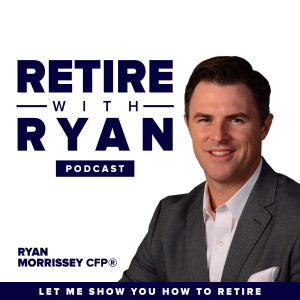
How You Can Lower Your Retirement Plan Costs, #170
 2023-10-11
2023-10-11
A big part of saving for retirement is choosing retirement plan options whose fees won’t eat into your valuable nest egg. On this episode, I’m discussing all things retirement plan fees, how to know what you’re paying, and how to potentially lower those fees so that you can grow your money faster.
You will want to hear this episode if you are interested in...- The three levels of retirement plan fees [2:29]
- Active funds vs. index funds [6:55]
- Using a brokerage window to diversify your investment options [12:07]
Understanding the three levels of retirement plan fees is crucial for optimizing your savings. The first level is administrative fees. These cover essential plan maintenance and services and can be either a fixed amount per employee or an asset-based charge determined by a percentage of your plan balance. While you may not have direct control over these fees, it's worth discussing with your employer and encouraging them to explore cost-saving options, as high administrative fees can eat into your retirement savings.
The second level consists of individual service fees, typically charged per transaction, such as taking a 401(k) loan or doing a plan rollover. While these fees are usually modest, they are set by the plan provider and beyond your control. The final level is investment fees, which offer you the most control. These fees stem from the investments you choose within your plan and are typically the highest. They are generally asset-based, meaning they are also a percentage of your account balance. It's essential to understand these fees, as they can range from very low to as high as 2%. Being aware of and managing these fees is key to maximizing your retirement nest egg.
Choosing the right investment fundsWhen reviewing your participant fee disclosure for your retirement plan, it's important to pay attention to the expense ratio of the mutual funds or investments you're considering. Most 401(k) plans primarily offer mutual funds as investment options, and within the fee disclosure, you'll find information about these costs. My approach when helping clients navigate this process is to begin by identifying investment options with the lowest expense ratios. Often, these options are index-based investments.
Index funds are designed to track specific market segments, like the S&P 500, which represents the 500 largest U.S. stocks. These funds tend to have lower ongoing investment charges because they require minimal management. In contrast, actively managed funds aim to outperform these indexes, but they come with higher costs, typically around 1% to 2% per year. Numerous studies have shown that most active funds and managers struggle to consistently beat their benchmark indexes over time. Therefore, while active management may offer the potential for higher returns, the odds are not in your favor. Opting for index funds provides a more prudent, less speculative approach to investing. That's why I strongly recommend them to my clients. Building a diversified portfolio using various index-based strategies across different asset classes can help you achieve your long-term financial goals while minimizing unnecessary risk. Listen to this episode for more on lowering your retirement plan costs!
Resources Mentioned- Retirement Readiness Review
- Fiduciary (Book)
www.MorrisseyWealthManagement.com/contact
More Episodes
 2024-01-24
2024-01-24
 2024-01-10
2024-01-10
 2024-01-03
2024-01-03
 2023-11-22
2023-11-22
 2023-10-04
2023-10-04
Create your
podcast in
minutes
- Full-featured podcast site
- Unlimited storage and bandwidth
- Comprehensive podcast stats
- Distribute to Apple Podcasts, Spotify, and more
- Make money with your podcast
It is Free
- Privacy Policy
- Cookie Policy
- Terms of Use
- Consent Preferences
- Copyright © 2015-2024 Podbean.com




